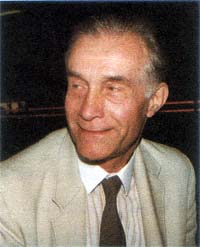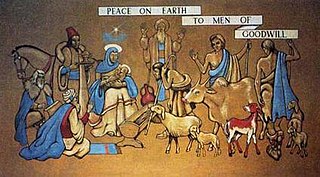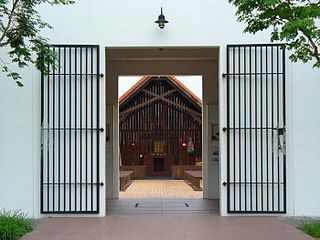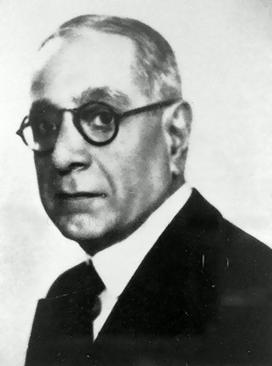
Changi Prison Complex, often known simply as Changi Prison, is a prison complex in the namesake district of Changi in the eastern part of Singapore. It is the oldest and largest prison in the country, covering an area of about 50 ha. Opened in 1936, the prison has a rich history.
John Leonard Wilson was an Anglican bishop. He was Bishop of Singapore from 1941 to 1949 during the time of Japanese occupation and subsequently Dean of Manchester and Bishop of Birmingham.

Stanley Warren was an English painter. He was a bombardier of the 15th Regiment of the Royal Regiment of Artillery who became known for the Changi Murals he painted at a chapel during his internment in Changi prison in Singapore during World War II.
A civilian internee is a civilian detained by a party to a war for security reasons. Internees are usually forced to reside in internment camps. Historical examples include Japanese American internment and internment of German Americans in the United States during World War II. Japan interned 130,000 Dutch, British, and American civilians in Asia during World War II.

Stanley Internment Camp was a civilian internment camp in Hong Kong during the Second World War. Located in Stanley, on the southern end of Hong Kong Island, it was used by the Japanese imperial forces to hold non-Chinese enemy nationals after their victory in the Battle of Hong Kong in December 1941. About 2,800 men, women, and children were held at the non-segregated camp for 44 months from early January 1942 to August 1945 when Japanese forces surrendered. The camp area consisted of St Stephen's College and the grounds of Stanley Prison, excluding the prison itself.

The Selarang Barracks incident, also known as the Barrack Square incident or the Selarang Square Squeeze, was a revolt of British and Australian prisoners-of-war (POWs) interned in a Japanese camp in Changi, Singapore.
The "Double Tenth incident" or "Double Tenth massacre" occurred on 10 October 1943, during the Second World War Japanese occupation of Singapore. The Kenpeitai—Japanese military police—arrested and tortured fifty-seven civilians and civilian internees on suspicion of their involvement in a raid on Singapore Harbour that had been carried out by Anglo-Australian commandos from Operation Jaywick. Three Japanese ships were sunk and three were damaged, but none of those arrested and tortured had participated in the raid, nor had any knowledge of it. Fifteen of them died in Singapore's Changi Prison.

The Changi Murals are a set of five paintings of biblical theme painted by Stanley Warren, a British bombardier and prisoner-of-war (POW) interned at the Changi Prison, during the Japanese occupation of Singapore in World War II (WWII). His murals were completed under difficult conditions of sickness, limited materials and hardships. With a message of universal love and forgiveness, they helped to uplift the spirits of the POWs and sick when they sought refuge in the prison chapel.

Josef Nassy was an Surinamese American expatriate artist of Jewish descent. Nassy was living in Belgium when World War II began, and was one of about 2,000 civilians holding American passports who were confined in German internment camps during the war.

The Changi Chapel and Museum is a war museum dedicated to Singapore's history during the Second World War and the Japanese occupation of Singapore. After the British Army was defeated by the Imperial Japanese Army in the Battle of Singapore, thousands of prisoners of war (POWs) were imprisoned in Changi prison camp for three and a half years. While interned there, the POWs built numerous chapels, one of which was named St George's Church.
Eugene Ernest Colman was an English chess master. The son of the architect Ernest Gershom Colman (1851-1935) he graduated from Cambridge University with a law degree and entered service in the Malay States. When he retired, he stayed on in Malaysia and set up youth clubs throughout the peninsula.

The Weixian Internment Camp, better known historically as the Weihsien Internment Camp, was a Japanese-run internment camp called a ”Civilian Assembly Center” in the former Wei County, located near the city of Weifang, Shandong, China. The compound was used by the Japanese during World War II to intern civilians of Allied countries living in North China. The camp operated from March 1943 until October 1945 and more than 2,200 civilians were interned for all or part of the time the camp was open.

George Kenner was a German artist. He made 110 paintings and drawings during the First World War while interned as a German civilian internee in Great Britain and the Isle of Man.
John George Mennie, A.R.M.S. D.A.(ABDN). ARMS., was a Scottish artist who came to public attention in 2011 for his many contemporaneous drawings of his life as a prisoner of war during the Japanese occupation of Singapore and Thailand in World War II. The drawings were made in secret depicting scenes of daily life and personalities in the camps in Singapore and Thailand, working on the Death railway. They also uniquely documented the Selarang Square Squeeze when some 17,000 prisoners were forced to crowd in the barracks square for nearly five days with little water and no sanitation until they signed a 'promise not to escape'.
Violet Maria Bombell (née Sleigh), became Miss Malaya when she was crowned "Miss Max Factor of Malaya" in 1953. She also won the second place in the Miss Malaya 1954 pageant in Singapore.

Ezekiel Saleh Manasseh was a Singaporean rice and opium merchant and hotelier of Iraqi-Jewish descent, who co-founded Singapore's Goodwood Park Hotel with his brothers Morris and Ellis. During the Japanese occupation, Manasseh was sent to Changi Prison where he died in 1944. Eden Hall was built as his home in 1904, and is now the official residence of the British High Commissioner in Singapore.
Hugh Fraser (1891–1944), was a British colonial administrator. He was the last acting Colonial Secretary of Straits Settlements before the fall of Singapore on 15 February 1942 to the Japanese Occupation and was interned in Changi Prison. He subsequently died in Outram Road Prison in 1944.

Sir George Vance Allen was an Anglo-Irish British medical doctor, bacteriologist and academic administrator who served as the first Vice-Chancellor of the University of Malaya.











